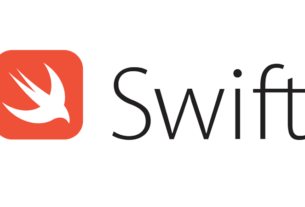Question or problem with Swift language programming:
I have an app that sometimes needs its navigation bar to blend in with the content.
Does anyone know how to get rid of or to change color of this annoying little bar?
On the image below situation i have – i’m talking about this 1px height line below “Root View Controller”
How to solve the problem:
Solution 1:
For iOS 13:
Use the .shadowColor property
If this property is nil or contains the clear color, the bar displays no shadow
For instance:
let navigationBar = navigationController?.navigationBar let navigationBarAppearence = UINavigationBarAppearance() navigationBarAppearence.shadowColor = .clear navigationBar?.scrollEdgeAppearance = navigationBarAppearence
For iOS 12 and below:
To do this, you should set a custom shadow image. But for the shadow image to be shown you also need to set a custom background image, quote from Apple’s documentation:
For a custom shadow image to be shown, a custom background image must
also be set with the setBackgroundImage(_:for:) method. If the default
background image is used, then the default shadow image will be used
regardless of the value of this property.
So:
let navigationBar = navigationController!.navigationBar navigationBar.setBackgroundImage(#imageLiteral(resourceName: "BarBackground"), for: .default) navigationBar.shadowImage = UIImage()
Above is the only “official” way to hide it. Unfortunately, it removes bar’s translucency.
I don’t want background image, just color
You have those options:
-
Solid color, no translucency:
navigationBar.barTintColor = UIColor.redColor() navigationBar.isTranslucent = false navigationBar.setBackgroundImage(UIImage(), for: .default) navigationBar.shadowImage = UIImage() -
Create small background image filled with color and use it.
-
Use ‘hacky’ method described below. It will also keep bar translucent.
How to keep bar translucent?
To keep translucency you need another approach, it looks like a hack but works well. The shadow we’re trying to remove is a hairline UIImageView somewhere under UINavigationBar. We can find it and hide/show it when needed.
Instructions below assume you need hairline hidden only in one controller of your UINavigationController hierarchy.
-
Declare instance variable:
private var shadowImageView: UIImageView? -
Add method which finds this shadow (hairline)
UIImageView:private func findShadowImage(under view: UIView) -> UIImageView? { if view is UIImageView && view.bounds.size.height <= 1 { return (view as! UIImageView) } for subview in view.subviews { if let imageView = findShadowImage(under: subview) { return imageView } } return nil } -
Add/edit
viewWillAppear/viewWillDisappearmethods:override func viewWillAppear(_ animated: Bool) { super.viewWillAppear(animated) if shadowImageView == nil { shadowImageView = findShadowImage(under: navigationController!.navigationBar) } shadowImageView?.isHidden = true } override func viewWillDisappear(_ animated: Bool) { super.viewWillDisappear(animated) shadowImageView?.isHidden = false }
The same method should also work for UISearchBar hairline,
and (almost) anything else you need to hide 🙂
Many thanks to @Leo Natan for the original idea!
Solution 2:
Below can help simply!
Swift:
self.navigationController?.navigationBar.setValue(true, forKey: "hidesShadow")
Objective C:
[self.navigationController.navigationBar setValue:@(YES) forKeyPath:@"hidesShadow"];
Solution 3:
If you just want to use a solid navigation bar color and have set this up in your storyboard, use this code in your AppDelegate class to remove the 1 pixel border via the appearance proxy:
[[UINavigationBar appearance] setBackgroundImage:[[UIImage alloc] init]
forBarPosition:UIBarPositionAny
barMetrics:UIBarMetricsDefault];
[[UINavigationBar appearance] setShadowImage:[[UIImage alloc] init]];
Solution 4:
Try this:
[[UINavigationBar appearance] setBackgroundImage: [UIImage new]
forBarMetrics: UIBarMetricsDefault];
[UINavigationBar appearance].shadowImage = [UIImage new];
Below image has the explanation (iOS7 NavigationBar):

And check this SO question:
iOS7 – Change UINavigationBar border color
Solution 5:
Wanted to add the Swift version of Serhii’s answer. I created a UIBarExtension.swift with the following:
import Foundation
import UIKit
extension UINavigationBar {
func hideBottomHairline() {
self.hairlineImageView?.isHidden = true
}
func showBottomHairline() {
self.hairlineImageView?.isHidden = false
}
}
extension UIToolbar {
func hideBottomHairline() {
self.hairlineImageView?.isHidden = true
}
func showBottomHairline() {
self.hairlineImageView?.isHidden = false
}
}
extension UIView {
fileprivate var hairlineImageView: UIImageView? {
return hairlineImageView(in: self)
}
fileprivate func hairlineImageView(in view: UIView) -> UIImageView? {
if let imageView = view as? UIImageView, imageView.bounds.height <= 1.0 {
return imageView
}
for subview in view.subviews {
if let imageView = self.hairlineImageView(in: subview) { return imageView }
}
return nil
}
}



